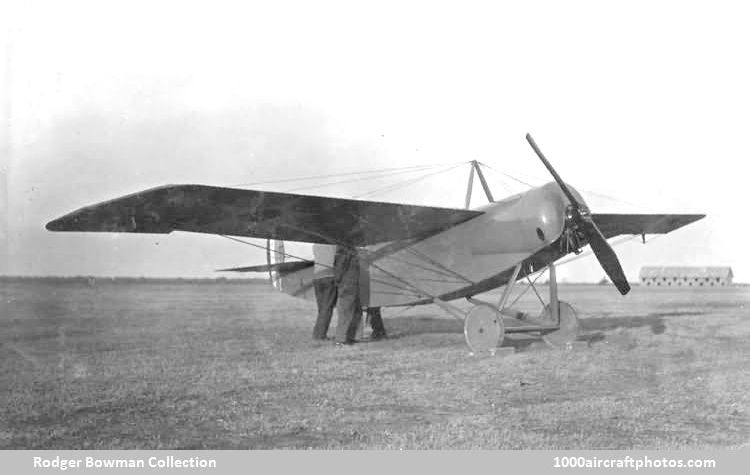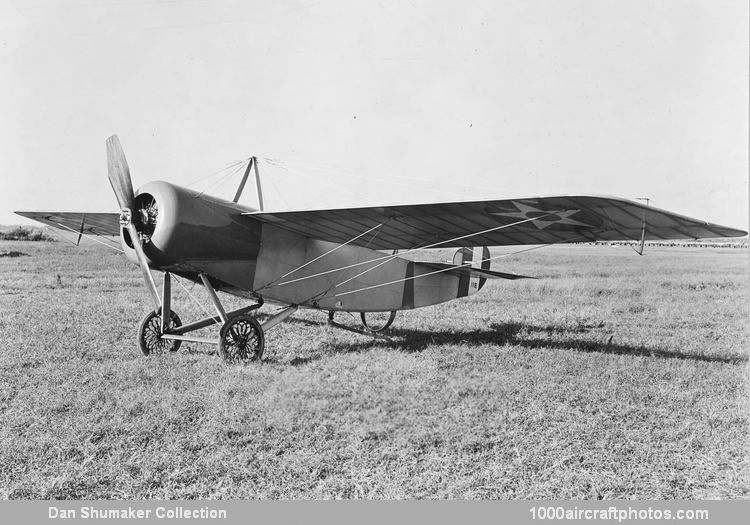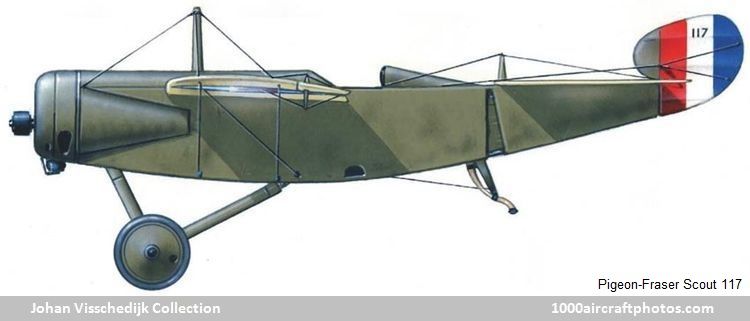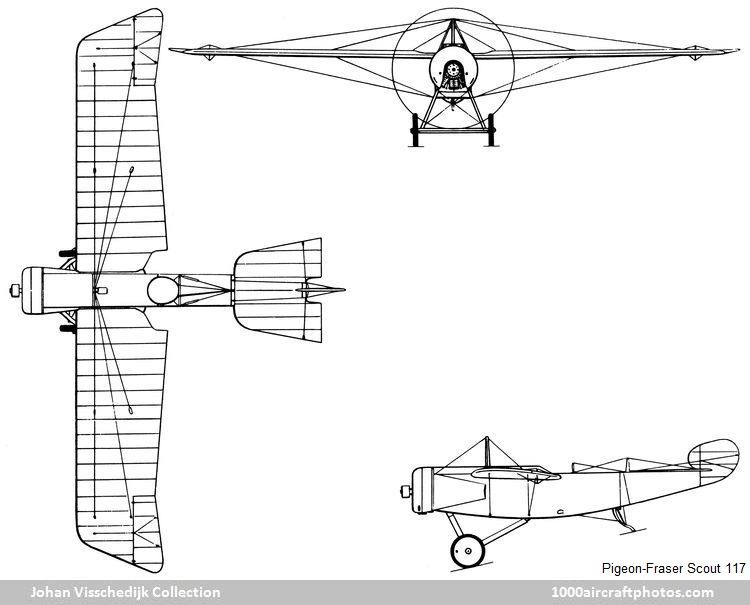Photographed at Langley Field, Hampton, Virginia, USA, November 25, 1917, via NARA
03/31/2008. Remarks by
Johan Visschedijk: "This single-seat fighting scout was the first pursuit aircraft contracted for by the United States and was designed by George Norman Albree at the Pigeon Hollow Spar Company, East Boston, Massachusetts, USA, and is also known as Albree Monoplane.
(116) (
Dan Shumaker Collection)
(117) (
Dan Shumaker Collection)
Two aircraft were delivered to the USASC in September 1917, s/n 116 and 117, for testing at Langley Field, Virginia, USA.
The aircraft was of wooden construction and powered by an 100 hp Gnome & Rhône rotary engine. A unique design concept of the aircraft was that the "rudder" was not used for flight control, but only to compensate for engine torque. Also the Scout quite possibly was the very first aircraft design to invoke the use of an all 'flying tail' as the entire tail assembly was hinged behind the cockpit moving up and down for elevator control. It is believed to be the first aircraft to utilize a flat-bottomed airfoil, and uniquely designed spring-type wheels were used to provide shock absorption.
The first aircraft was tested to destruction, while reportedly the second aircraft was test flown on behalf of the USASC, crashing on its first flight, killing the pilot. The USASC considered the aircraft both unreliable and too slow, consequently, no series production was undertaken.
A third unfinished aircraft was stored in the rafters of the Pigeon Company. It was bought by Cole Palen on November 15, 1961, and restored for display at the Old Rhinebeck Aerodrome Museum.
Thanks to Rodger Bowman,
Gil Halpin and
Old Rhinebeck Aerdrome for their input."





